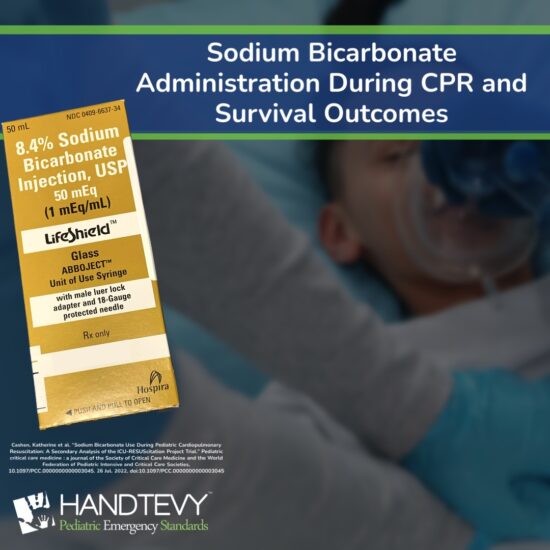Sodium Bicarbonate Administration During CPR and Survival Outcomes

Sodium bicarbonate is indicated for select patients including preexisting metabolic acidosis, hyperkalemia, or tricyclic antidepressant overdose. However, many providers are still administering it for cardiac arrests even though we know it makes matters worse.
Introduction
Cardiopulmonary resuscitation (CPR) is a life-saving procedure performed on individuals experiencing cardiac arrest. In pediatric in-hospital cardiac arrest (p-IHCA), approximately 15,000 children in the United States are affected every year. One of the treatments historically used during CPR is sodium bicarbonate, intended to counteract the negative effects of metabolic acidosis. However, its efficacy and safety have been subjects of debate.
Study Overview
A recent research study titled “Sodium Bicarbonate Use During Pediatric Cardiopulmonary Resuscitation: A Secondary Analysis of the ICU-RESUScitation Project Trial” aimed to evaluate the associations between sodium bicarbonate use and outcomes during p-IHCA.
Design:
Secondary analysis of a prospective, multicenter cluster randomized interventional trial.
- 18 ICUs participating in the ICU-RESUScitation Project (NCT02837497).
- Children ≤ 18 years old and ≥ 37 weeks post conceptual age who received chest compressions from October 2016 to March 2021.
Key Findings
- Usage: Out of 1,100 cardiopulmonary resuscitation events, 528 (48.0%) received sodium bicarbonate.
- Outcomes:
– 773 (70.3%) achieved return of spontaneous circulation (ROSC).
– 642 (58.4%) survived to hospital discharge.
– 596 (54.2%) survived to hospital discharge with a favorable neurologic outcome.
– Sodium bicarbonate use was associated with a lower survival rate to hospital discharge (adjusted odds ratio [aOR], 0.7; 95% CI, 0.54–0.92; p = 0.01).
– It was also linked to a lower rate of survival to hospital discharge with a favorable neurologic outcome (aOR, 0.69; 95% CI, 0.53–0.91; p = 0.007).
– No significant association was found between sodium bicarbonate use and ROSC (aOR, 0.91; 95% CI, 0.62–1.34; p = 0.621).
Conclusion
The study suggests that while sodium bicarbonate use is common during pediatric in-hospital cardiac arrest, it is associated with lower rates of survival to hospital discharge. This finding underscores the importance of continually evaluating and updating treatment protocols based on the latest research to ensure the best possible outcomes for patients.
Bottom Line (saying it loud for those in the back):
Sodium bicarbonate use is associated with decreased survival to hospital discharge and decreased survival to hospital discharge with favorable neurologic outcome. The authors suggest that sodium bicarbonate is often used as a “last-ditch” effort for patients who are unlikely to survive.
Read the study here:
http://ow.ly/9fZ050K6TbP
*Source: “Sodium Bicarbonate Use During Pediatric Cardiopulmonary Resuscitation: A Secondary Analysis of the ICU-RESUScitation Project Trial” published in Pediatric Critical Care Medicine, 2022.*


